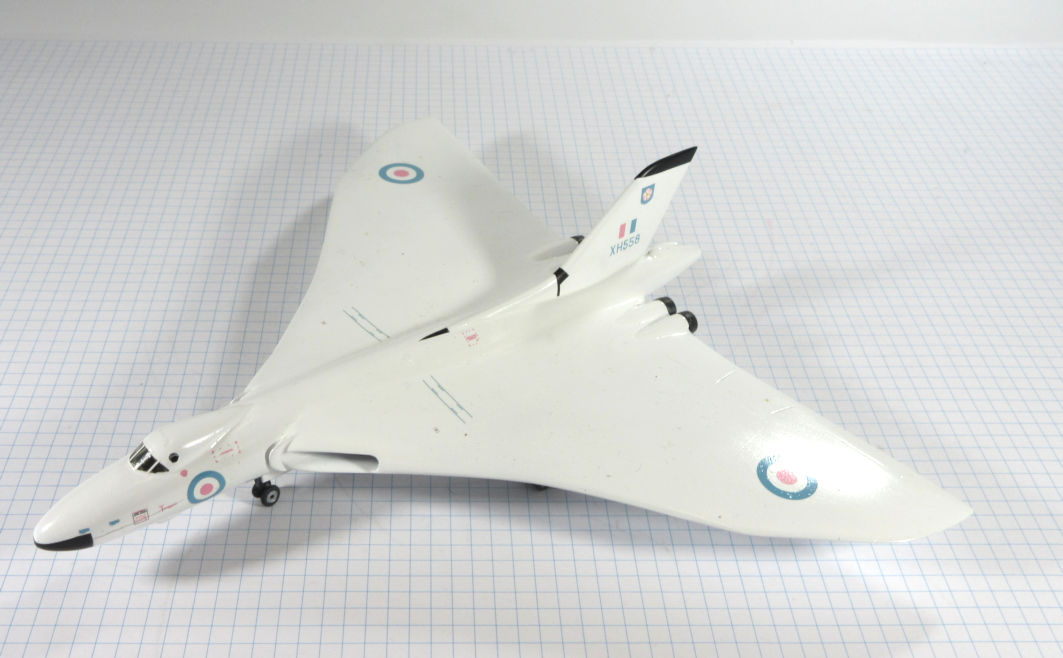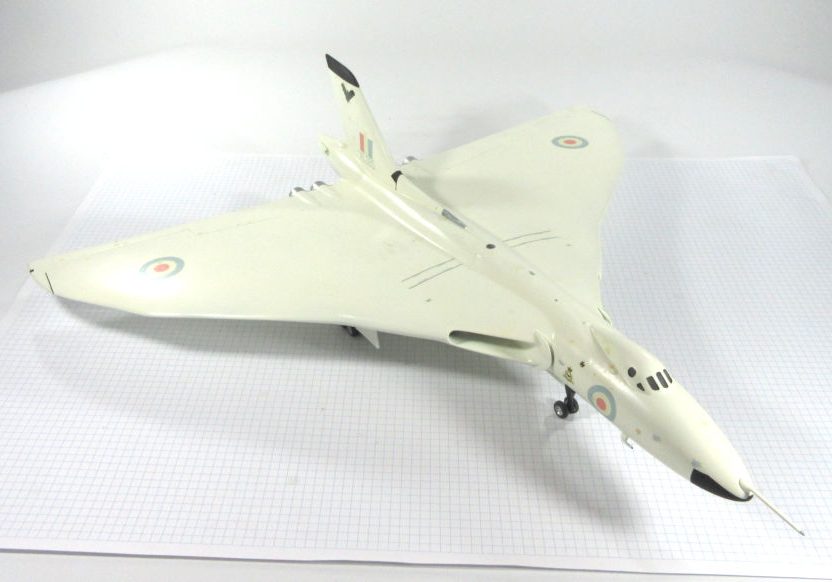In the aftermath of World War II the Royal Air Force was determined to retain the strategic bombing capability it had built up, but armed with the new atomic bomb which would, planners hoped, provide a deterrent strong enough to prevent the outbreak of a new war. The result was specification B.35/46 for an aeroplane that could be based anywhere in the world and be able to reach a target 2,735 km (1 700 miles) away with a payload of 10,000lbs and the ability to fly at altitudes up to 13,715 metres (45,000 feet), to evade enemy interceptors. The result was the development of the RAF’s V-bombers, the Vickers Valiant, Avro Vulcan and Handley Page Victor.
Achieving the specifications was a major engineering challenge and Avro decided that the best solution was to exploit the new concept of the delta wing, initially without a fuselage but later with a fuselage pod added to the leading edge of the wing. The design was radical enough that Avro built a series of one-third scale flying research aircraft to test it.
The first of two Vulcan prototypes flew on 30 August 1952 and the second prototype on 3 September 1953. The production Vulcan B.1 flew in February 1954 but initial tests found that the straight leading edge of the delta wing led to serious buffeting that was solved by modifying the wing to give it a kinked leading edge.
The Vulcan B.1 entered service in May 1956 and around the same time work began on an improved version with more powerful engines, an ECM pod added to the tail and other modifications and the Vulcan B.2 began entering service in 1960.
During this time development of a stand-off rocket powered nuclear weapon, the Blue Steel, had been developed and Vulcan B.2s were modified to carry it, entering service in December 1962. By the end of 1964 there were 69 Vulcans in service, 45 of them B.2s and 24 armed with Blue Steels.
In 1969 Britain’s nuclear deterrence role was transferred to Royal Navy missile armed submarines and the Vulcans took on the new role of low level tactical bombing. Their colour schemes changed to match their new role with the all-over white of their nuclear deterrence role being replaced by grey and green schemes more suitable for their new role.
In the early 1980s plans were announced to phase out the Vulcans over three years but in mid-1982 they became involved in the war between Britain and Argentina over the Falklands. Seven very long range ‘Black Buck’ raids using Vulcans were launched between 1 May and 11 June, most of them successful in sending one Vulcan as far as the Falklands for bombing or anti-radar raids. After the end of the war the Vulcans quickly disappeared from service.
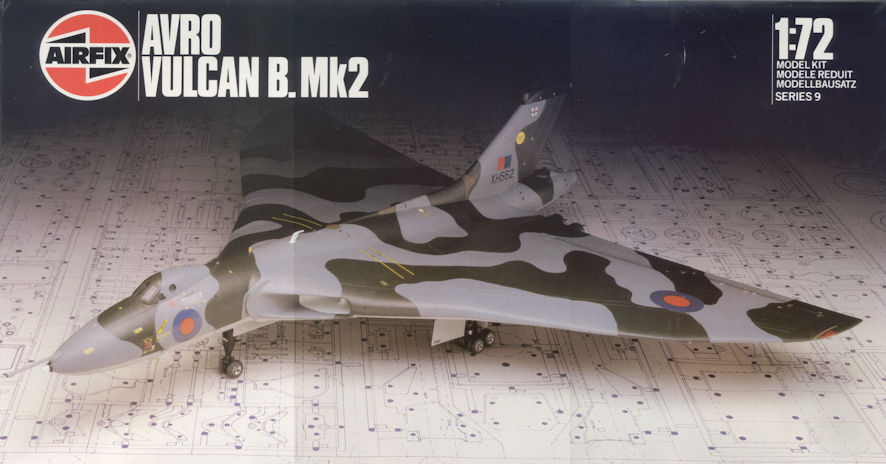
When you think about it, the Vulcan is a pretty weird looking aeroplane. We just take it for granted because they were around for so long but at the time they were designed and built they were at the cutting edge of aviation technology. I don’t happen to think that they look very attractive in comparison to the other V-Bombers, in particular the Victor, but that’s taste for you and it’s no reason not to make one, particularly to stand next to the elegant Victor for comparison.
There was a vacform kit available from the 1970s and Airfix did not release their injection moulded version until 1984, just as the Vulcans were leaving service. At the time most reviewers praised the kit as one of the best things Airfix had done for years – these days Airfix doesn’t do much except re-release old kits and so the Vulcan is one of the kits that comes out again every few years. The kit comes with enough parts and decals to make three versions including the Blue Steel armed nuclear bomber.
These days we wouldn’t call this a perfect kit, it has a number of niggling little problems that make it rather annoying at times. One is the leading edge air intakes that may be better than Matchbox’s Victor kit but still need more than enough work with filler and filing to merge everything properly. For the Blue Steel version several large antennas have to come off the nose and tail but the plastic is thick enough to do that with no trouble. The kit provides the alternative of standard bomb bay doors or the faring for the Blue Steel that also doesn’t fit as well as it should. I also thought the wing trailing edges were far too thick and thinned them down, not a very difficult job given the softness of the plastic.
I chose to make the overall white version. Once upon a time I would have done almost anything to avoid s shiny white colour scheme but these days I’m starting to get the hang of it and it isn’t too difficult, really, if I am patient about getting an almost flawless surface, putting on a couple of coats of silver and then a couple of coats of semi-glass white. The masking for the black antennas and jet exhausts was tedious, but that comes with the hobby.
For me the most disappointing aspect of the kit was the decals. Not that there aren’t enough of them but simply that the shade of the blue for the powder blue and pink roundels for the nuclear version are far too bright for my liking. This was confirmed by a sheet released by Modeldecals some years ago which has some additional markings for different squadrons from those in the kit and the colour on that sheet is almost exactly the same as that used for the roundels on the decal sheet printed by Scale Aircraft Modeller many years back that I had used for my Victor kit.
Fortunately that sheet had enough marking for two kits and they are the right size for the Vulcan so I used them in place of the ones supplied with the kit. However there are no substitutes for the stencilling supplied by the Airfix decal sheet which are too bright, but fortunately most of that goes under the wings so you don’t have to look at them.
Overall, not a bad kit and quite attractive in its own grumpy kind of way.
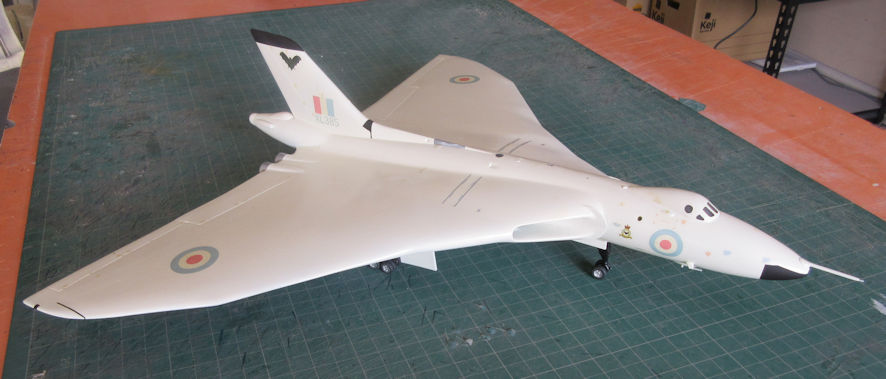
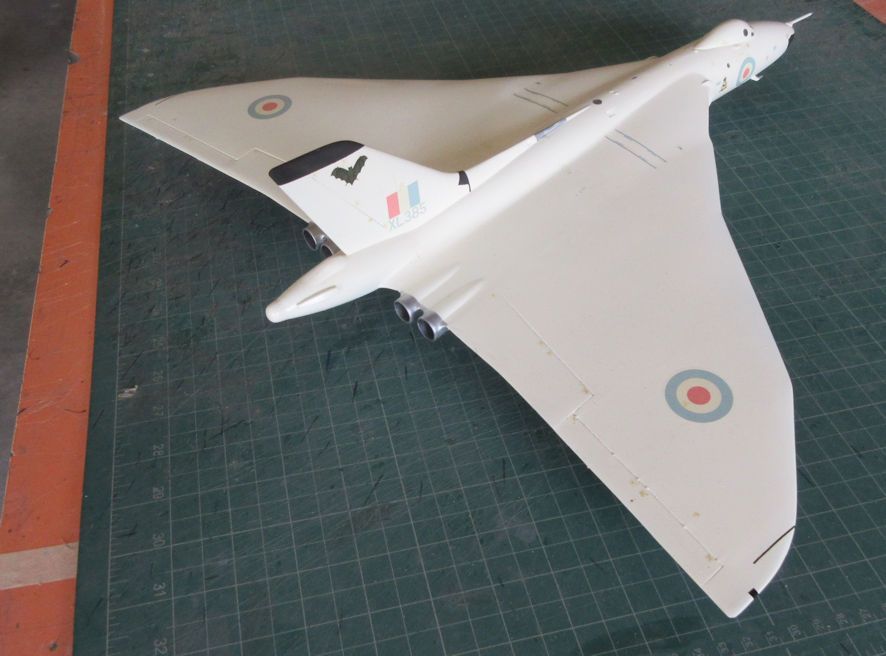
Leigh Edmonds
January 2003
